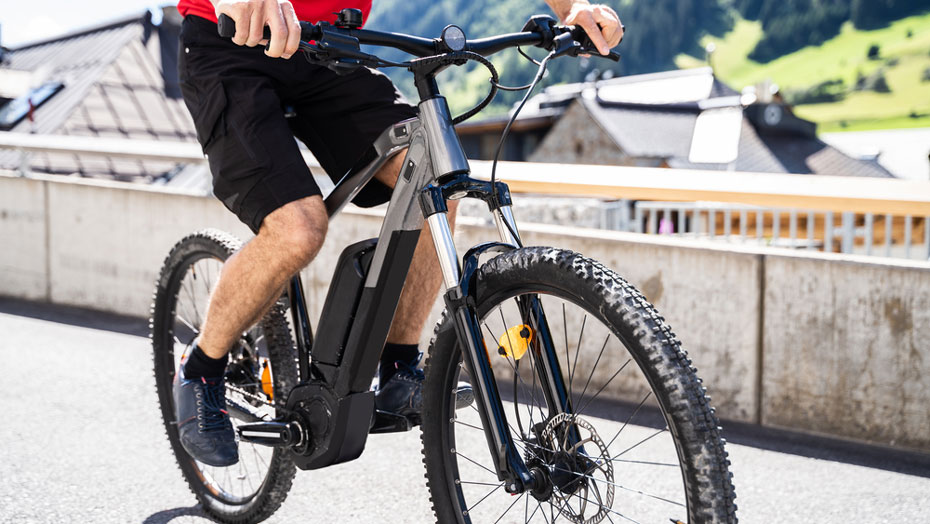Electric bikes are a great way to get around the urban environment, off-road, and even on tour. They’re fast, cost-effective, easy to ride and require very little effort to get you from A to B. So, do you have to pedal electric bikes?
Do you have to pedal electric bikes?
There is a common perception that electric bikes do not require any effort at all and pedalling is not required. This depends on where you are using your electric bike as laws differ from country to country.
In the US, it is possible to use an electric bike without pedalling, and some electric bikes have a torque system fitted to the pedals, so you only need to press a button (or hit the throttle) to start moving. Speeds are capped at 20 mph in the United States, as federal law states that an electric bike motor cannot power speeds over 20 mph.
If you’re living in the UK or other parts of Europe, the laws are different. Here, all-electric bikes require some form of pedalling to activate the electric motor.
How do pedals on electric bikes work?
The use of a motor and battery are the two fundamental differences between an electric bike and a normal conventional bike. The pedals are also configured slightly differently on an electric bike. Not only are they useful in a conventional way, propelling you whenever you pedal, they are also used as an activation system for the electric motor.
Most electric bikes allow you to select the level of assistance you require from the electric motor, with a high amount of pedal-assist using more battery and reducing the range of the electric bike before it needs to be recharged.
Another option is to disable the electric motor altogether and cycle as you would on a normal bike. Electric bikes are always going to be heavier, but they will still be fully functional when used without their motor.
If you’re worried about the range of your electric bike, it’s always best to pedal with a lower level of pedal-assist activated. This will save battery for when you need more assistance from the electric motor in more challenging cycling circumstances such as hill climbs or riding into a strong headwind.
Does pedalling charge your electric bike?
This depends on what make and model of electric bike you use. While some models will allow the pedals to charge the battery as you ride, most will not offer this feature.
The design of an electric bike’s motor is to provide power (forward propulsion) as you pedal.

This power is controlled by the amount of pedal assistance you use. Allowing your pedal power to charge the battery would require your motor and battery to receive the energy provided by pedalling, and would stop the motor from providing pedal assistance, disconnecting from forwarding propulsion.
Some more sophisticated electric bikes use kinetic energy recovery systems such as regenerative braking which captures heat and energy when the brake is applied. These types of electric bikes have a direct drive hub motor and return the captured energy (around 5-10%) to the motor, in turn charging the battery in small amounts.
One French company called Veloci Industries has gone one step further marketing the very first battery-free electric bike. This bike uses supercapacitors to capture power from pedalling and was designed to compensate for traditional electric bikes’ lithium Ion batteries being damaging to the environment and also being non-recyclable.
Can they work without pedalling?
Electric bikes that are sold in the US allow you to use a throttle to power your bike without pedalling, however, you’ll still need to provide some amount of pedal power when riding up hills, although minimal effort will be required.
If you’re in Europe, the law states that an electric bike requires some form of pedalling at all times. If you are in Europe and have an electric bike that can be powered by a throttle, it is classified as an electric moped and requires licensing, taxation, and the mandatory use of a helmet at all times.
In Europe, there is also a limit set to 25 kph/ 15.5mph maximum speed for an electric-powered bike. Any electric bike that can produce a faster speed or that can power over 250 watts is considered an electric moped.
What happens when you pedal electric bikes?

This depends on the type of electric bike you own. Most electric bikes are configured to provide a level of pedal assistance while you ride.
In most models, the amount of pedal assistance required can be adjusted usually by a button. The higher the amount of pedal-assistance, the more your electric motor is engaged, and the more drain on the battery.
Do they feel any different to regular bikes?
Cycling on an electric bike is not much different from riding a conventional bike. The main difference is that electric bikes are often heavier due to their battery, motor, and sturdier frame.
Electric bikes require you to start pedalling first and then a slow and gradual amount of power from the electric motor will be introduced. It feels pretty seamless as one of the advantages of electric motors is they do not require gears and can provide a steady increase in torque all the way to top speed.
Once you’re cycling an electric bike, it doesn’t feel much different when compared to a regular bike. The motor will provide the desired level of pedal assist, making the ride easier on the legs.
One of the most noticeable differences between ride comfort on an electric bike and a normal bike is on hill climbs. Most electric bikes will require some form of pedalling while ascending a hill. Electric bikes make hill climbs an absolute breeze, with very little pedal effort required.